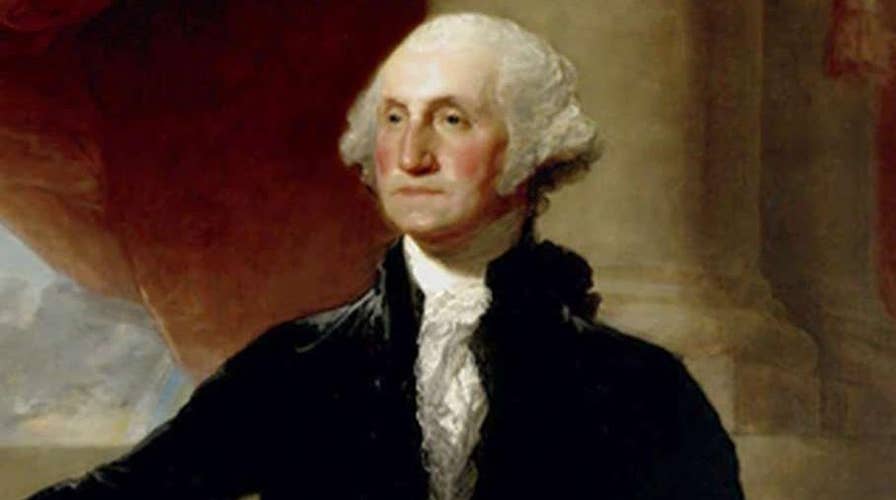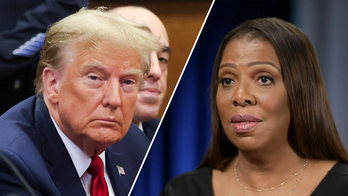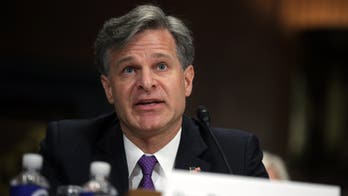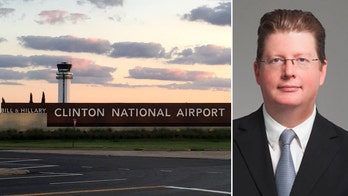High school social studies teachers now have the easiest job in America.
Imagine what these teachers go through each January or February. The cajoling and arm-twisting and bonus-point dangling, just to convince a bunch sophomores to watch the president’s annual State of the Union speech and then write a report about it.
WHITE HOUSE DENIES PELOSI LEAK CHARGE AS DETAILS FROM KABUL CABLE RAISE QUESTIONS OVER CLAIM
What high school student wants to watch some guy in a suit decades older than them talk politics from the stuffy House chamber? The only good part is watching the two people who sit behind the President and all of the funny faces they make.
Give me "Bird Box." Call of Duty: Black Ops 4 Blackout. Ariana Grande.
Considering the nation’s current state of the affairs, who wouldn’t want to watch the State of the Union?
Granted, the speech might not happen. But if it does, the State of the Union could very well be a mashup of WrestleMania 25, Neo versus Agent Smith in "The Matrix" and an old-school line brawl between the Philadelphia Flyers and New York Rangers, circa 1975.
I mean, House Speaker Nancy Pelosi, D-Calif., all but rescinded an invitation for President Trump to speak to a joint session of Congress later this month. And then the president, as commander in chief, ordered the 89th Air Wing not to fly the speaker to Afghanistan. This came all while members of Congress were sitting on an Air Force bus on Capitol Hill, tricked out with a Capitol Police escort, to drive them to Joint Base Andrews in Maryland to head overseas.
Confusion reigned. Congressional officials placed a flurry of frantic, dubious phone calls to the White House, the Pentagon and the State Department. Then the motor coach pulled out, pursued by a squadron of reporters like kids chasing a missed school bus.
MEDIA PRAISE PELOSI, RIP TRUMP OVER SHUTDOWN SPAT
Talk about a caravan.
But then the bus looped around the House Office Buildings before winding up on the Capitol plaza. Lawmakers debarked in disgust.
Was Mr. Trump retaliating against Pelosi?
DOWNLOAD THE FOX NEWS APP BY CLICKING HERE
“I would hope not,” replied Pelosi. “I don’t think the president would be that petty, do you?”
“I look forward to seeing you soon,” was the president’s almost smug, répondez s'il vous plaît, tucked into the final line of his missive to the speaker squelching her trip. Many interpreted the crack as an indication Trump was heading to the Capitol for the speech no matter what.
The State of the Union speech is an annual rite in the American body politic. Congress and news crews convert the House chamber into a massive, political soundstage. It’s the biggest speech of the year with all three branches of government packed into the same place. But we often think it’s been this formal, stilted, often tedious bit of pablum.
The State of the Union speech hasn’t always looked the way we think.
President George Washington delivered the first message to a Joint Session of Congress, meeting in New York in 1790.
President Thomas Jefferson halted the practice of an in-person oratory in 1801. It’s said Jefferson was too shy to give speeches. He sent a written copy to both the House and Senate. Back then, the U.S. worked to establish new conventions to distinguish itself from Mother England. Whatever the reason, Jefferson argued a speech too closely mirrored an address from the throne.
So for a more than a century, presidents submitted their remarks in writing, forgoing a speech. A House clerk read the report out loud to lawmakers.
That all changed in 1913 as President Woodrow Wilson rejuvenated the practice of an in-person address. President Calvin Coolidge was the first to deliver the speech on radio in 1923. Radio built President Franklin Delano Roosevelt into a major, political star with his intimate Fireside Chats. Radio then fortified the role of the annual address to Congress. Roosevelt first used the phrase “State of the Union” in 1934. President Harry Truman’s 1947 speech was the first to be televised.
But things really changed in 1965. That’s when President Lyndon Johnson delivered the first State of the Union in prime time.
The speech matured into a television bonanza, with networks sending main anchors to Washington for coverage. Hundreds of reporters cluster in the Capitol hallways to dissect the president’s remarks.
And there are those eight indelible words, stitched into the State of the Union fabric:
“Mr. Speaker! The president of the United States!”
Of course, that phrase morphed into “Madam Speaker!” when Pelosi became the first woman to wield the House gavel in 2007.
We’ll hear those words again this year if Trump indeed shows up for the speech.
That is, unless Pelosi decides to ditch the event.
And yet we wonder why Rep. Tom Marino, R-Penn., decided to quit Congress two weeks into his new term….
The point is that the Constitution’s dictate of an annual “message to Congress” evolved over time. Each president and Congress placed an indelible mark on the State of the Union.
The State of the Union address is organic. Change is inevitable. Perhaps we’re at a nexus of change now. With the events of the past few days, one wonders how Congress and the executive will handle future State of the Union messages.
There’s been conjecture that perhaps the President could give his remarks in the Senate chamber if things are too frosty with Pelosi. Or maybe Mr. Trump would rev up the base with a “Make America Great Again” rally in a minor league hockey arena somewhere. Or, perhaps he’d do something on Twitter - de rigueur for the president.
This is why Pelosi’s gambit to potentially delay President Trump’s speech is so unusual.
“I’m not denying him a platform at all,” said Pelosi. “I’m saying, let’s get a date when government is open.”
Is Pelosi engaged in psy-ops with the President? A ruse to get inside his head and rattle him? After all, Mr. Trump tweeted about being cooped up in the White House by himself through the holidays. We’ve all heard of cabin fever. Perhaps “shutdown fever” has set in.
Republicans stood foursquare around the president.
"For Nancy Pelosi to withdraw the offer because she’s afraid of hearing what he has to say shows incredible insecurity on her part,” said House Minority Whip Steve Scalise (R-LA).
Or was Pelosi’s tactic more noble? Is the speaker trying to preserve the integrity and tradition of State of the Union? Various lawmakers speculated that the entire episode could devolve into a melee on the floor. Or maybe Pelosi was trying to protect Democrats who might not be respectful of the President? Or would Democrats even show up, eliciting a batch of criticism? What would it be like for Pelosi, sitting on the dais behind the speaker? Would Mr. Trump break with tradition and call her out? Attempt to debate her? Try to embarrass her? Was it possible the president might not be respectful of Pelosi?
“That’s probably true,” said Pelosi, drawing laughter.
One veteran Democrat observed that Pelosi was simply trying to lower the temperature and avoid a spectacle on the House floor.
After Mr. Trump shelved the Afghanistan trip, the temperature spiked.
And if President Trump comes to Capitol Hill anyway on Jan. 29?
“We’ll cross that bridge when we come to it,” said Pelosi. “Although we haven’t heard. Very silent.”
There are now worries about the shutdown impacting the Super Bowl. House Majority Whip Jim Clyburn, D-S.C., brought up the issue in a meeting with other Democrats this past week. The Department of Homeland Security deems the Super Bowl a “national security event.” Yet many of those charged with protecting the game won’t receive pay.
“We need people at their sharpest,” said House Majority Leader Steny Hoyer D-Md.
More than 100 million Americans regularly view the Super Bowl each winter. It’s easily the most-watched TV event of the year.
But if contretemps lingers between the president and the speaker, this year’s State of the Union speech may rival the Super Bowl in the Nielsen ratings.





